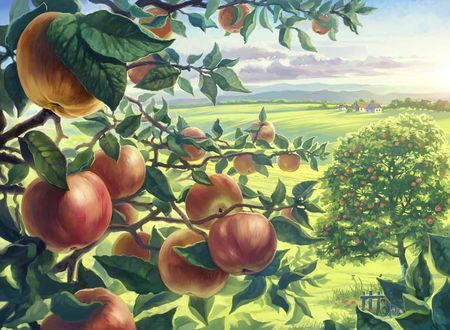My parental house is located in what has become a very congested area in Delhi. When I was growing up, our colony consisted of all independent houses with little garden patches at the front or behind. Around the late nineties, most independent houses were razed down for the construction of storied buildings. The peril of the ever-burgeoning Indian population: the only expansion possible is vertical. Within a few years, buildings with several small-sized apartments mushroomed in the area. Old residents left. Typically, at least four apartments were built in the space of a single house. Sometimes the same area accommodated 8-10 pigeon-hole apartments. Fights for parking spaces became common. Earlier, very few families had cars. Now, there were more residents and more than one car per family. The problem was compounded manifold. Over the years, people have found amicable solutions to these everyday hassles. New houses are being built with underground or ground parking. Within the limited space afforded by the terrace, people grow flowers, creepers, and other potted plants in an effort to bring back green in some way, perhaps.
Once Upon a Treetop
When I was a child, my then house had a neem tree, a mulberry tree, several flowering plants, creepers, and a small vegetable patch. One year my grandmother planted the seeds of a rare cotton plant that shot up in no time. It grew tall and slender in the style of the beanstalk of the famed story. It had dark green leaves and pink-purplish flowers. Its buds burst open when the time was right, revealing small cotton clouds. How amazed we were to witness cotton on a plant! It was also home to several dusty-looking caterpillars that caused itching if one came in contact with them. The caterpillars were a menace. At some point, when the cotton plant dried up completely, it was cut down. The neem tree, however, graced our house for many, many years. Interestingly, the sundry insects, wasps, and rodents never bothered my granny. It was her habit, before eating, to break her roti into crumbs; some of these were thrown to the ants while the others to the sparrows. In those days, keeping apart a small portion of one’s food for other beings was common practice. Another custom ( in Northern India) was making extra chapatis for cows and stray dogs daily in the daily meals. All lives, big or small, were seen as interconnected on the canvas of nature. No scholarly articles were written about it. People just knew. The everyday rituals strengthened the gossamer threads of interconnection.
My grandmother once stupefied us with her composure while facing a snake. Next to our house was a vacant patch of land (unthinkable today) overgrown with shrubs and undergrowth. A cobra crept in from the other side one day. My mother, hanging clothes on the line, saw it crawling on the wall. She screamed, not knowing what to do. What my grandmother did next was equally quizzical. Though not one whit ritualistic, she got Gangajal from the altar, sprinkled some water on the serpent from a distance, and pleaded with it to leave the compound. “Dear, nag devata, please retreat to your abode. My family lives here. I pray to you, most humbly. Go back, please go back.” I am not sure if the snake heeded her requests or got irritated with the water. Either way, it got the message and went away. What amazes me is that the idea of attacking the snake never occurred to her. Having lived close to the land, she was not threatened by a snake. Somewhere she understood that mutual coexistence was the natural order of things. You had to develop boundaries and safeguard yourself. But the idea of killing was unthinkable. Most of us have severed that deep connection with nature.
Growing Among Birds, Bees, and Trees
Hailing from a farming background, my grandmother grew random plants wherever she found a space. Using her spade, she turned the soil up and down, this way and that, and threw some seeds in. Most of our plants got planted in this fashion. One time, she found a neem sapling growing somewhere on the road. In her characteristic nonchalance, she uprooted it and planted it in the courtyard. The neem plant, a resilient one, grew without any fuss. In a year or two, it outstretched its arms in every possible direction. I remember its heavy branches were chopped mercilessly one year when our neighbor complained of excessive shedding of leaves on his side. For a long time, the tree looked like a newly tonsured child. My grandmother had a plan up her sleeve. She took some fresh cow dung and smeared it on the chopped parts. We watched her in amazement even doubting her methods. When the first showers of rain touched down, delicate leaves and twigs—rosy pink in color—sprouted from the chopped limbs. In no time, our tree claimed its old grandeur.
Many of our childhood memories took birth around the neem tree. I believed it to have been as old as my younger brother. We (my younger sister and brother) climbed and settled on its branches after returning from school. Children had fancy toys; we had a tree. Sitting atop a tree is an indescribable feeling. One feels like the king of the world for no apparent reason. In the summers, our Neem bloomed with white blossoms, which soon turned into seeds or ‘nimbauri,’ filling the air with a sweetly pungent smell. One year my grandmother threw a thick rope around a strong branch, got a man to wind the rope around, harnessed it in place, and viola, we had a personal swing! The wooden ‘Patra’ from the house acted as our royal seat. Our courtyard provided endless playing options to my siblings, who were mischievous (and, therefore, vastly more interesting) than me. Their favourite pastime was digging a network of drains similar to the ones they had seen in my mother’s village. These extensive digging missions were executed using branches, shovels, ladles, and tongs from the kitchen; basically, anything that could serve the purpose of a digging implement. At last, when the network of canals would finally come close to what the architects had visualized, they poured water from one end using a garden hosepipe. Their eyes twinkled in delight as the water rushed through their crisscrossing drains.
Several types of birds and insects frequented our courtyard. I remember how once a cuckoo sat and sang on our neem tree; ‘a rare occurrence’ as per my mom. She maintained that cuckoos never perched on neem trees. What bias! Maybe the bird had to accommodate for the lack of choice (of trees) in the city. Nevertheless, our not-so-manicured courtyard hosted many visitors: house sparrows, mynas, squirrels, crows, doves, pigeons, and rodents of different sizes. I even remember spotting hoopoes, a rare sight now in our part of Delhi.
Death of a Tree
Many years later, the neem tree had to be cut down when its roots began encroaching on our neighbour’s veranda. For a long time, my parents kept on dithering. Then one day, the tree had to go. We lost a family member. Seeing it cut was akin to witnessing a murder. And the cutting of a tree is no easy business. It refuses to budge, clutching at the heart of mother earth with all its might. Four to five men are needed to break its determination to live. The first blows of the axe do not achieve much. The tree looks formidable under attack. Initially, when they used the axe, all we saw was a mere shuddering of the trunk. Bit by bit, the hardened bark chipped off, showing pinkish layers similar to tender human skin. Sometimes, red blotches could be seen on the wood—the marks of a brutal attack. The final blows broke its stubbornness to shreds. The stump stood defeated; droplets of water splattered at every blow of the axe. If only it could see us (his friends and siblings) sobbing at the other end. With the passing of our Neem, a lot changed in the courtyard. Gone were the birds and the bees.
Rise of the Buildings
Towards the beginning of the millennium, my parental house was a lone survivor in a jungle of storied houses. The last remnant of a bygone era, as it were. Its old building was giving away. Sandwiched between two towers, we barely received any sunlight. So, it was decided to demolish it and construct an apartment-style four-storied building instead. After a gruelling three-year wait (Covid time included), the house was finally ready to move into last year. While the rooms are smaller than earlier, the big roof is the prized possession of my parents. In fact, that was the real deal. Having lived in an independent house all their lives, the idea of not having access to a roof was unthinkable to them. My siblings and I failed to convince them to move to newer localities in the NCR region. And once I stepped on the rooftop, I realized why it was so. In the city maze, the roof affords them a small patch of sky. Whatever might happen in the world outside, up on this roof, they feel in control.
(to be contd..)
P.S
Do check out the poem ‘On Killing a Tree’ by Gieve Patel here.









Comments & Discussion
20 COMMENTS
Please login to read members' comments and participate in the discussion.